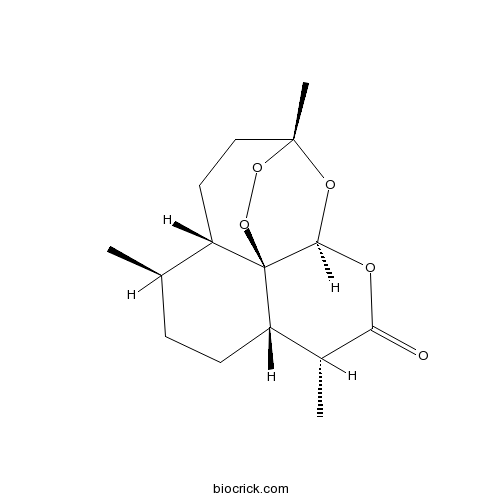Artemisia dubia
Artemisia dubia
1. The products in our compound library are selected from thousands of unique natural products; 2. It has the characteristics of diverse structure, diverse sources and wide coverage of activities; 3. Provide information on the activity of products from major journals, patents and research reports around the world, providing theoretical direction and research basis for further research and screening; 4. Free combination according to the type, source, target and disease of natural product; 5. The compound powder is placed in a covered tube and then discharged into a 10 x 10 cryostat; 6. Transport in ice pack or dry ice pack. Please store it at -20 °C as soon as possible after receiving the product, and use it as soon as possible after opening.
Natural products/compounds from Artemisia dubia
- Cat.No. Product Name CAS Number COA
-
BCN5814
Artemisinin63968-64-9
Instructions

Fumigant and repellent activities of essential oil extracted from Artemisia dubia and its main compounds against two stored product pests.[Pubmed: 28532258]
None
Cellular engineering of Artemisia annua and Artemisia dubia with the rol ABC genes for enhanced production of potent anti-malarial drug artemisinin.[Pubmed: 27142388]
Malaria is causing more than half of a million deaths and 214 million clinical cases annually. Despite tremendous efforts for the control of malaria, the global morbidity and mortality have not been significantly changed in the last 50 years. Artemisinin, extracted from the medicinal plant Artemisia sp. is an effective anti-malarial drug. In 2015, elucidation of the effectiveness of artemisinin as a potent anti-malarial drug was acknowledged with a Nobel prize. Owing to the tight market and low yield of artemisinin, an economical way to increase its production is to increase its content in Artemisia sp. through different biotechnological approaches including genetic transformation.
Bioactivities of volatile components from Nepalese Artemisia species.[Pubmed: 23413575]
The essential oils from the leaves of Artemisia dubia, A. indica, and A. vulgaris growing wild in Nepal were obtained by hydrodistillation and analyzed by GC-MS. The major components in A. dubia oil were chrysanthenone (29.0%), coumarin (18.3%), and camphor (16.4%). A. indica oil was dominated by ascaridole (15.4%), isoascaridole (9.9%), trans-p-mentha-2,8-dien-1-ol (9.7%), and trans-verbenol (8.4%). The essential oil of Nepalese A. vulgaris was rich in alpha-thujone (30.5%), 1,8-cineole (12.4%), and camphor (10.3%). The essential oils were screened for phytotoxic activity against Lactuca sativa (lettuce) and Lolium perenne (perennial ryegrass) using both seed germination and seedling growth, and all three Artemisia oils exhibited notable allelopathic activity. A. dubia oil showed in-vitro cytotoxic activity on MCF-7 cells (100% kill at 100 microg/mL) and was also marginally antifungal against Aspergillus niger (MIC = 313 microg/mL). DFT calculations (B3LYP/6-31G*) revealed thermal decomposition of ascaridole to be energetically accessible at hydrodistillation and GC conditions, but these are spin-forbidden processes. If decomposition does occur, it likely proceeds by way of homolytic peroxide bond cleavage rather than retro-Diels-Alder elimination of molecular oxygen.
Highly oxygenated guaianolides from Artemisia dubia.[Pubmed: 20486075]
Investigation of a Chinese folk medicine, Artemisia dubia (syn. Artemisia subdigitata), has resulted in the isolation of eight new guaianolides (artemdubolides A-H, 1-8), and nineteen known sesquiterpene lactones. Their structures were elucidated primarily on the basis of spectroscopic methods, including extensive 2D NMR experiments. The cytotoxic activities of compounds 1-8 were evaluated against A549 (human lung adenocarcinoma), Colo205 (human colon carcinoma), HepG2 (human hepatoma), and MDA-MB-435 (human melanoma) cell lines. Compounds 2 and 5 showed weak cell growth inhibition of Colo205 and MDA-MB-435 cells.
[Direct identification of Artemisia argyi, Artemisia dubia and Artemisia lavandulaefolia by FTIR].[Pubmed: 12583186]
To directly and accurately identify Artemisia argyi Levl. et Vant., Artemisia dubia Wall. and Artemisia lavandulaefolia DC.


